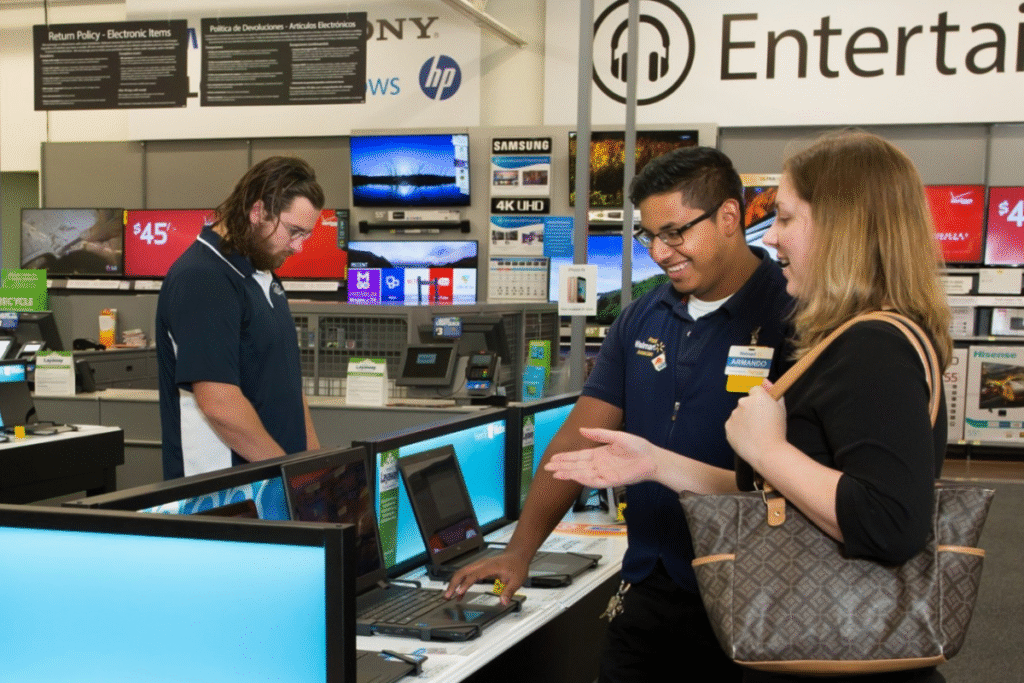Introduction
The way we shop online has been continuously evolving. From desktops to mobile devices, every new technological wave has reshaped the way customers interact with brands. Now, a new trend is emerging that is set to redefine online shopping yet again—voice commerce. Powered by voice assistants like Amazon’s Alexa, Google Assistant, and Apple’s Siri, voice commerce allows users to search, browse, and even purchase products simply by speaking.
But is voice commerce just a passing trend, or is it truly the next big thing in e-commerce? Let’s explore in depth.
What is Voice Commerce?
Voice commerce (v-commerce) refers to buying and selling products online through voice-enabled devices. Instead of typing product names on a website or mobile app, customers can simply say commands such as:
-
“Alexa, order a new phone charger.”
-
“Hey Google, buy a pair of running shoes.”
-
“Siri, reorder my last grocery order.”
Voice commerce makes shopping faster, easier, and more convenient by eliminating the need for manual browsing.
The Growth of Voice Technology
Voice technology adoption has been booming. Here are some key stats that highlight the growth of this trend:
-
55% of households are expected to own a smart speaker by 2026.
-
72% of people who own voice-activated speakers use them daily.
-
Global voice commerce sales are projected to surpass $80 billion by 2026.
This rapid adoption is driven by consumer demand for convenience and the increasing accuracy of voice recognition technologies.
How Voice Commerce Works
The process of voice commerce can be broken down into a few simple steps:
-
Voice Command – The user speaks a command to a smart device. Example: “Order organic dog food.”
-
Voice Assistant Processing – The assistant recognizes and interprets the request.
-
Search & Suggestion – The system searches for suitable products, often prioritizing previous purchases or top-rated items.
-
Confirmation – The assistant asks for confirmation: “Do you want me to place the order for XYZ brand?”
-
Transaction – Once confirmed, the order is processed and paid through saved payment methods.
This seamless experience removes friction from the buying process.
Benefits of Voice Commerce
1. Convenience
Shoppers no longer need to browse pages or type long queries. Voice commands make shopping hands-free and instant.
2. Speed
With voice commands, users can complete purchases in seconds, perfect for reordering everyday items.
3. Accessibility
Voice commerce benefits people with disabilities, limited mobility, or those who prefer verbal interaction over typing.
4. Personalization
AI-powered voice assistants learn customer behavior and offer personalized product recommendations.
5. Multitasking
Consumers can shop while cooking, driving, or working—something traditional e-commerce cannot match.
Challenges of Voice Commerce
While promising, voice commerce faces a few hurdles:
-
Security Concerns – Users worry about unauthorized purchases, especially in households with multiple users.
-
Product Discovery Limitations – Voice assistants often suggest only a few options, limiting product visibility for brands.
-
Accuracy of Recognition – Misinterpretation of commands can frustrate users.
-
Payment Security – Consumers want reassurance that their financial data is secure.
-
Limited Adoption Across Regions – While popular in the US and Europe, many regions are still behind due to language barriers and low smart speaker adoption.
Industries Most Impacted by Voice Commerce
-
Retail & E-commerce – From groceries to fashion, consumers use voice assistants to reorder daily essentials or buy new products.
-
Food & Beverage – Ordering pizza, coffee, or groceries via voice is becoming mainstream.
-
Travel & Hospitality – Booking hotels, flights, or taxis using voice commands is rising.
-
Healthcare – Ordering prescription refills or booking medical appointments through voice systems.
-
Banking & Finance – Customers can check account balances, pay bills, and transfer funds through voice-enabled apps.
Strategies for Businesses to Adapt to Voice Commerce
1. Optimize for Voice Search
Businesses must rethink SEO. Unlike text-based searches, voice queries are conversational and longer. For example:
-
Typed: “best headphones 2025”
-
Voice: “Which are the best headphones to buy in 2025 for gaming?”
2. Build Voice-Activated Apps (Voice Skills)
Brands can create custom Alexa Skills or Google Actions to engage customers directly.
3. Focus on Local SEO
Many voice searches are local in nature. Example: “Find a coffee shop near me.” Businesses should optimize their listings on Google My Business.
4. Ensure Seamless Payment Integration
Customers expect smooth, secure, and fast transactions. Using trusted payment gateways is essential.
5. Personalization & Loyalty Programs
Encourage repeat purchases by offering personalized suggestions and loyalty rewards via voice platforms.
The Future of Voice Commerce
Voice commerce is still in its early stages, but its potential is massive. Here’s what we can expect:
-
Smarter AI Recommendations – Voice assistants will become more accurate in predicting what customers want.
-
Integration with AR/VR – Imagine saying, “Show me how this sofa looks in my living room,” and getting a visual demo.
-
Expansion Beyond Shopping – Voice commerce will integrate deeper into healthcare, education, and entertainment.
-
Multilingual Support – Better language processing will allow global adoption.
-
More Trust in Security – Biometric voice recognition may solve many security concerns.
FAQs
What is voice commerce?
Voice commerce refers to purchasing products or services using voice-enabled devices such as Amazon Alexa, Google Assistant, or Apple Siri.
How is voice commerce different from traditional e-commerce?
In traditional e-commerce, customers type queries and browse websites. In voice commerce, they simply speak their commands, making the process faster and more convenient.
Is voice commerce safe?
Yes, but like any digital platform, it requires strong security measures. Using voice recognition, secure payments, and password protection reduces risks.
Which devices support voice commerce?
Popular devices include Amazon Echo, Google Nest, Apple HomePod, and even smartphones with Siri or Google Assistant.
Which businesses benefit the most from voice commerce?
Retail, grocery, food delivery, travel, and healthcare industries benefit the most as customers prefer quick, repeat, and everyday purchases through voice.
Will voice commerce replace mobile apps?
Not entirely. Voice commerce will complement mobile and web platforms, offering consumers another convenient option.
How can small businesses prepare for voice commerce?
Small businesses can start by optimizing their websites for voice search, ensuring they are listed on Google Maps, and offering easy reordering options.
Conclusion
Voice commerce isn’t just a futuristic concept—it’s happening now. With more households adopting smart speakers and voice assistants becoming increasingly accurate, voice-driven shopping is set to be the next big thing in e-commerce. Businesses that adapt early by optimizing for voice, securing payments, and creating personalized experiences will be the ones to thrive in this evolving landscape.

